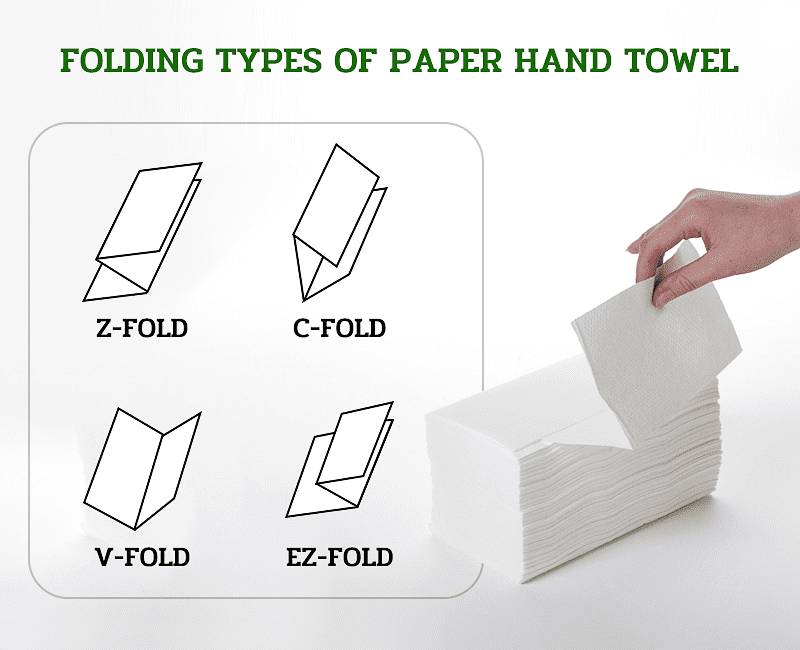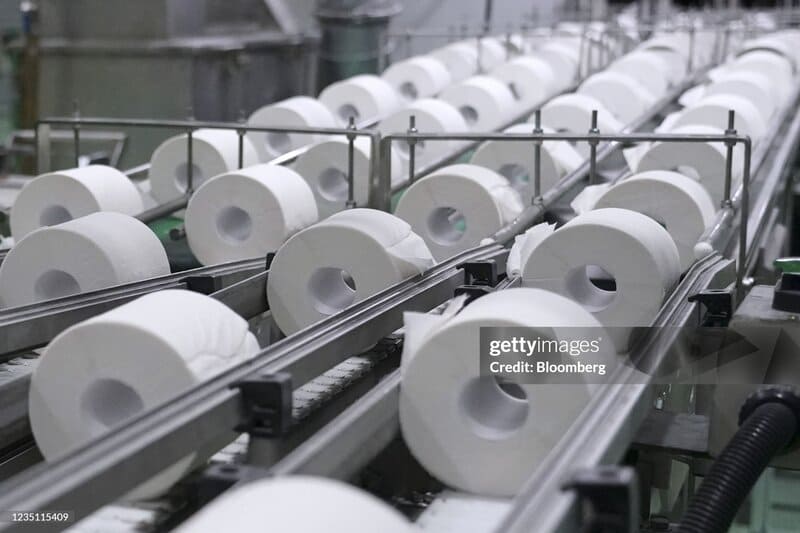2024 China Tissue Paper Industry Research: Essential Consumer Goods, Potential Profit Improvement with Cost Reduction
Current Industry Status: Weak Supply-Demand Balance, Declining Profits
1. Tissue Paper: Price Experienced “Stability-Rise-Slight Drop”, Limited Range
Tissue paper prices went through “stability-rise-slight drop”: Since the beginning of the year, tissue paper prices experienced stable fluctuations in Q1, an increase in Q2, and a slight drop in Q3. Currently, prices have returned to the level at the beginning of the year. For example, in the Hebei market for wood pulp tissue paper, as of August 1st, the market price was 6,500 yuan/ton, consistent with the price at the beginning of the year.
Limited price fluctuation range: The range of price fluctuations was relatively limited. We saw that in mid-June, wood pulp tissue paper prices reached a high of 7,100 yuan/ton, +9% compared to the beginning of the year. Currently, prices are at the lowest level since the beginning of the year at 6,500 yuan/ton, -8% from the peak.
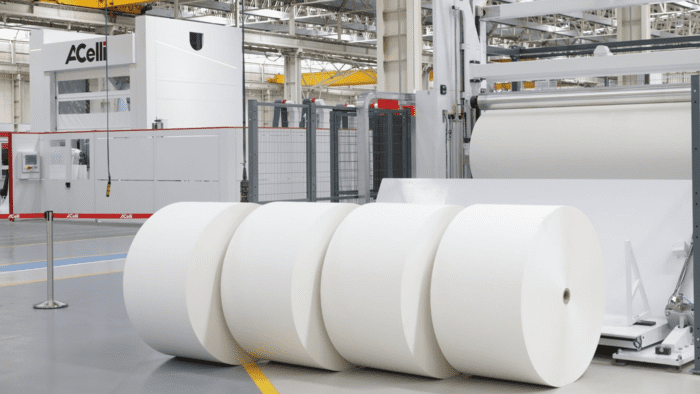
2. Tissue Paper: Weak Supply-Demand Balance, Declining Paper Prices
Price fluctuations in tissue paper since the beginning of the year have mainly been influenced by the weak supply-demand balance in the domestic tissue paper industry and rising upstream wood pulp prices.
Domestic production and capacity utilization both slightly declined year-on-year: Due to weak demand, intensified industry competition, and high upstream wood pulp prices, the profit recovery in the tissue paper industry has been limited, leading to a slight year-on-year decline in factory production. According to SCI99, total tissue paper production in the first 6 months of this year was 5.75 million tons, -0.6% year-on-year.
New capacity continues to be released, with controlled release pace. According to Tissue Paper Magazine, new industry capacity in the first half of this year was 693,000 tons, with 428,000 tons in Q1 and 265,000 tons in Q2. We observed that the increase in new capacity in Q2 slowed significantly compared to Q1, and the new capacity in the first half of the year was only about 30% of the annual plan, indicating a slowing pace of new capacity release.
3. Tissue Paper: Listed Companies’ Growth Slows, Profits Decline
Short-term growth slowdown for leading enterprises: In the short term, due to disruptions in sales rhythm caused by wood pulp raw material prices and internal reforms or adjustments of leading enterprises, revenue growth has slowed, and profit levels have also declined in the short term.
Stable growth in the medium to long term: From a medium to long-term perspective, benefiting from relatively rigid terminal consumer demand, overall revenue maintains stable growth. In terms of profitability, wood pulp raw material prices have a relatively small impact on long-term profit levels, with the main impact coming from the upgrade of product structure due to improved consumption levels.

Demand: Relatively Rigid Demand, Expansion of Emerging Categories/Markets
Tissue Paper: Industry Development Trending Upward, Steady Growth in Consumption Scale
Steady upward industry development: As a high-frequency, low-price daily necessity, tissue paper consumption level is a measure of a country’s modernization and civilization. China’s tissue paper began to popularize in the 1980s, with domestic brands like Hengan, Vinda, C&S, and Gold Hongye mainly established between 1985-2000, introducing relatively advanced paper machines. With economic development, improvement in people’s living standards, and increased hygiene awareness, China’s tissue paper industry market scale has steadily increased. According to the China Tissue Paper Yearbook, in 2022, China’s tissue paper industry market scale and consumption reached 157.1 billion yuan and 11.85 million tons respectively, with compound annual growth rates of 8.1% and 7.0% respectively from 2015 to 2022, showing steady growth in domestic market consumption scale.
Purchasing Power: Increasing Disposable Income, Gradual Enrichment of Tissue Paper Categories
Gradual increase in per capita disposable income: With economic development, China’s per capita disposable income has steadily increased. According to the National Bureau of Statistics, in 2023, per capita disposable income reached 39,000 yuan, with a compound annual growth rate of 10.8% from 2000 to 2023. Urban and rural residents’ per capita disposable income grew at compound annual rates of 9.6% and 10.3% respectively.
Evolution of tissue paper: Additionally, strengthened consumer hygiene awareness has led to the gradual evolution and iteration of tissue paper. From the initial rough toilet paper made from grass paper or waste paper and grass pulp, to the current multiple varieties such as toilet paper, facial tissues, handkerchiefs, kitchen paper towels, and wipes, tissue paper varieties have become increasingly diverse.
Paper Product Structure: Toilet Paper Still Dominant, Increasing Proportion of Subdivided Categories
Toilet paper still dominates: In the domestic consumer tissue paper product structure, the consumption proportions of toilet paper, facial tissues, handkerchiefs, napkins, wipes, and absorbent paper for sanitary products are 50.5%, 32.6%, 4.6%, 4.0%, 6.9%, and 1.4% respectively, with toilet paper remaining the main category.
Gradual increase in the proportion of more subdivided product categories: The proportion of toilet paper has slightly decreased, while other subdivided categories such as napkins, wipes, and absorbent paper have increased. With the increase in the proportion of more subdivided product categories, there has been a steady increase in average sales price per ton. According to the China Tissue Paper Yearbook, the average terminal price in 2022 reached 13,300 yuan/ton, with a compound annual growth rate of 0.6% from 2015 to 2022.
Consumer Habits: Preference for High-end and Mid-range Consumer Goods
The concept of “specialized paper for specialized use” is maturing, with increased usage scenarios. As living standards improve and consumers become more health-conscious, they are demanding more refined tissue paper products. Manufacturers are actively responding to changes in consumer preferences by creating innovative products. Currently, tissue paper products are showing trends towards specialization and diversification. For example, toilet paper for essential home use has evolved from roll paper to box tissues, pocket tissues are convenient to carry, kitchen paper towels with stronger oil absorption are popular among some consumers, and hand towels are gradually being used in homes and public institutions. According to the “2024 China Quality Tissue Paper Consumption Trends Insight White Paper”, nearly 90% of consumers reported having developed awareness of using specialized paper for specialized purposes, with usage scenarios covering home dining rooms, kitchens, bathrooms, as well as offices and restaurants, with an average of 5 or more usage scenarios per person.
Product Form Upgrade and Expansion of Emerging Categories
- Dry tissues:Tissue paper product forms are constantly upgrading, with folded toilet paper gradually appearing. Compared to toilet paper rolls, folded toilet paper is more convenient to use and replenish, and consumer demand for folded paper is continuously increasing. Additionally, according to CBNData, cotton soft tissues, facial cleansing tissues, handkerchiefs, and hand towels continue to capture market share with a 20% growth rate. Leading companies such as Hengan, C&S, and Vinda have all created product matrices for different categories to meet the diverse consumer demands. For example, Hengan’s Cloud Soft series grew by 26.6% year-on-year in 2023, reaching 1.3 billion yuan and accounting for 12.0% of tissue sales, gradually optimizing the product structure.
- Wet wipes:Compared to dry tissues, wet wipes are more differentiated and have a wider variety. According to CBNData, in addition to regular wet wipes, cotton soft wipes, wet toilet paper, kitchen wet wipes, and bathroom wet wipes all maintain good growth. Disinfectant wipes, makeup remover wipes, cooling wipes, and skin care wipes achieved rapid growth in 2023.
Away-from-Home Market: Increased Commercial Application Scenarios, Release of Away-from-Home Market Demand
The away-from-home market maintains strong growth. Besides household use, the demand for tissue paper in away-from-home markets, including hotels, medical institutions, office buildings, and public facilities, is gradually increasing. According to Huajing Industry Research Institute, the market share of away-from-home tissue paper increased from 35% in 2017 to 38.6% in 2021. With the development of the tourism industry, the increase in commercial facilities, and higher hygiene requirements in away-from-home markets, the demand for tissue paper in hotels, resorts, restaurants, etc., is likely to further grow. Correspondingly, as the commercial market scenarios for tissue paper gradually increase, companies will need higher customer service capabilities, production capacity layout, and channel improvement abilities.
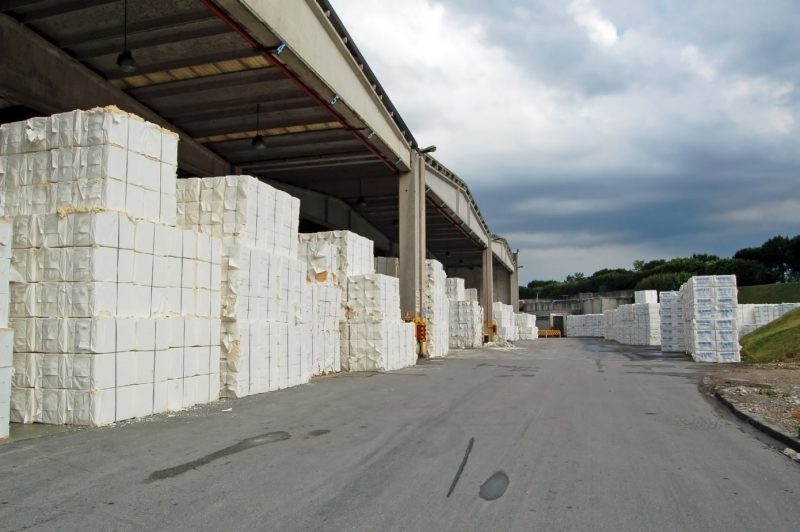
Supply: Slowing New Capacity, Accelerated Exit of Small and Medium-sized Enterprises
Supply: Slowing Industry New Capacity, Steady Recovery of Operating Rates
Continuous increase in industry capacity: With the gradual growth of tissue paper consumption in China, industry capacity, especially for large tissue paper machines with an annual capacity of 60,000 tons, has been rapidly released. From 2019 to 2021, the pace of capacity investment in the tissue paper industry accelerated, but after 2022, the speed of new capacity additions slowed down, with some capacity coming online delayed. According to the China Paper Association, the total installed capacity of China’s tissue paper industry in 2023 was 20.37 million tons, with a compound annual growth rate of 5.3% from 2010 to 2023.
Slow recovery of operating rates: Due to the rapid release of new capacity leading to an increase in supply, coupled with high upstream wood pulp prices, industry profitability has been difficult, causing industry operating rates to decline. In 2021, the industry operating rate reached 65%, falling below 70% for the first time. Since 2022, benefiting from increased uses and demand for tissue paper, and controlled new capacity release, the industry’s production growth rate has been higher than capacity growth rate, with industry operating rates continuously rising year-on-year. In 2023, the operating rate recovered to 66%.
Industry Concentration: Stable Market Structure, CR4 About 30%
Leading enterprises: Gold Hongye, Hengan, Vinda, and C&S are the four leading enterprises in China’s tissue paper industry. The main brands of these four companies – Breeze, Heart-to-Heart, Vinda, and C&S – are China’s four national brands, and the market structure has basically stabilized. According to the China Paper Association, in 2023, the capacity share of the top four leading enterprises in China’s tissue paper industry was about 30.2%. In addition to these four leading enterprises, since 2014, six tissue paper companies transformed from upstream and downstream enterprises have emerged, including Lee & Man, Taison, Shaoneng, Sun Paper, Asia Symbol, and Liansheng. Most of these companies’ products are mainly base paper and jumbo rolls, primarily targeting the B2B market, while leading companies like Gold Hongye, Hengan, Vinda, and C&S mainly focus on consumer tissue paper products, primarily targeting the B2C market. In 2024, the global leading pulp, paper, and tissue paper company – Eagle Group acquired Vinda Group, which may further promote the optimization of the industry structure.
Industry Participants: Elimination of Backward Capacity, Accelerated Exit of Small Enterprises
Decline in total number of industry participants: According to the China Paper Association, with the implementation of energy conservation, emission reduction, and backward capacity elimination policies, the total number of industry participants gradually decreased from over 400 in 2013 to 208 in 2023. Due to intensified industry competition and continuous optimization, we observed that the number of operating tissue paper enterprises decreased by 28 and 5 year-on-year in 2022 and 2023, respectively.
Accelerated exit of small enterprises from the market: The number of base paper mills with an annual capacity of over 1 million tons has steadily increased, while the number of enterprises with an annual capacity below 20,000 tons has declined most significantly. This is mainly due to new capacity additions being concentrated in large modern paper machines, while continuously eliminating backward capacity, with small enterprises accelerating their exit from the market or converting or suspending production. As leading tissue paper enterprises achieve economies of scale, coupled with high upstream commodity pulp and energy prices, market competition has intensified, and the industry has entered an accelerated reshuffling stage.
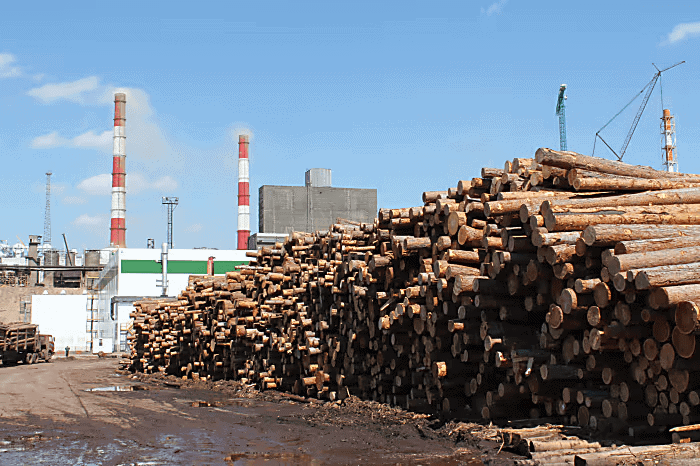
Raw Materials: Wood Pulp Prices Decline, New Capacity May Concentrate on Production
1. Bleached Hardwood Pulp Foreign Quotations Decline, Bleached Softwood Pulp Year-on-Year Decrease
Wood pulp, as one of the main raw materials for tissue paper, has a significant impact on industry costs with its price fluctuations. Wood pulp is mainly imported, and since 2006, China’s imported wood pulp consumption has accounted for over 60% of total consumption, indicating a high dependence on foreign sources.
Wood pulp prices: Since the beginning of the year, wood pulp foreign quotations and spot market prices have shown a trend of rising first and then falling, with prices generally running at high levels. Taking Birch Star bleached softwood pulp and Acacia Star bleached hardwood pulp as examples, as of the end of July 2024, CFR prices were $750/ton and $650/ton respectively, down $15/ton and $0/ton from the beginning of the year. At the end of July, bleached hardwood pulp quotations decreased by $90/ton, showing some softening in bleached hardwood pulp prices.
2. Pulp Import Volume Declines, Wood Pulp Inventory Remains High
Wood pulp demand: In the first half of the year, affected by terminal consumer demand, domestic paper mills carried out maintenance on existing capacity and slowed down the ramp-up of new capacity. Coupled with the rise in wood pulp prices, domestic import volume of wood pulp gradually decreased. According to the General Administration of Customs, except for December 2023, the monthly import value of pulp has shown a year-on-year decline since July 2023. In the first half of this year, China’s pulp import value reached $11.4 billion, -12.4% year-on-year, continuing the downward trend in pulp import volume by domestic paper mills.
Wood pulp inventory: Correspondingly, although pulp demand is relatively weak, with the decline in pulp import value, some wood pulp port inventories have slightly decreased. However, overall inventory levels remain high. Taking Qingdao Port and Changshu Port as examples, as of the end of July, pulp inventories reached 1.099 million tons and 487,000 tons respectively, -102,000 tons and +86,000 tons compared to the beginning of the year.
3. New Capacity Concentrated in Second Half, Supply Side Ample
Wood pulp supply side: In 2023, China’s imported wood pulp accounted for about 54% of total consumption, indicating a high dependence on foreign sources. Moreover, wood pulp supply is mainly concentrated in overseas markets such as Europe and America, and the supply side is relatively stable. Therefore, the tightening of wood pulp supply by overseas wood pulp mills has a significant impact on wood pulp prices. Since the beginning of this year, unexpected news from the overseas wood pulp market has continuously brought short-term supply tightening, coupled with a stronger US dollar, keeping production costs for domestic paper mills at high levels. Looking at the second half of the year, wood pulp capacity is entering a period of concentrated production. According to SCI99 statistics, domestic and foreign wood pulp industries plan to add new capacity of about 12.16 million tons in the second half of the year, which is expected to break the tight supply situation. In the medium to long term, according to Fastmarkets RISI, the scale of new capacity for global hardwood pulp and softwood pulp will be relatively large in the next three years, maintaining ample supply.

